German Traffic Police NCO/EM's Shako Cap
CATEGORY: Version
SKU: 52.GOR.01.01.02.03.003.000
Estimated market value:
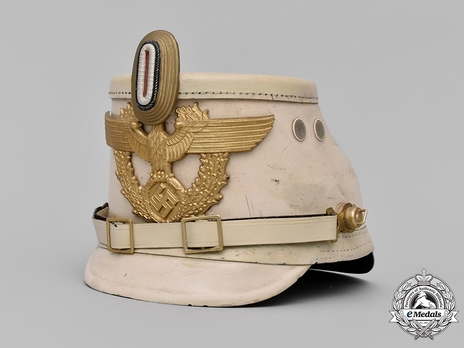
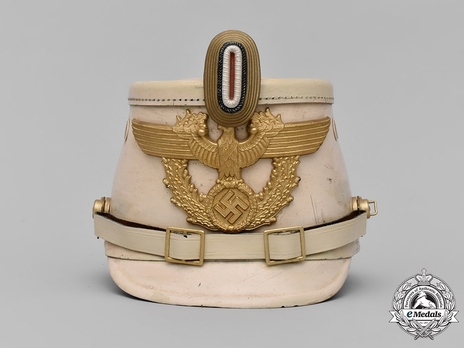
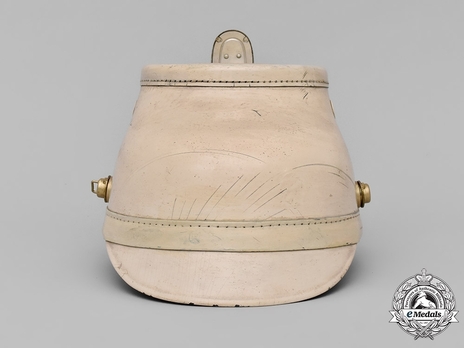
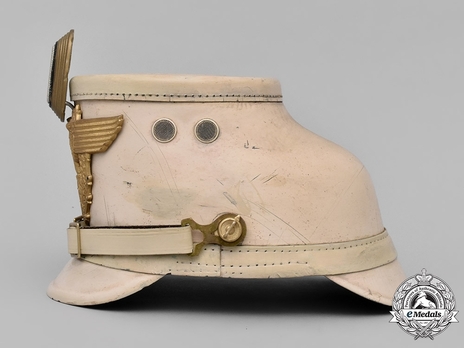
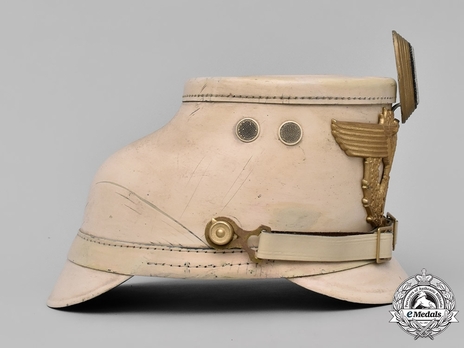
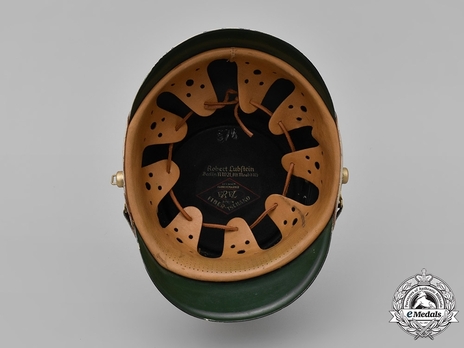
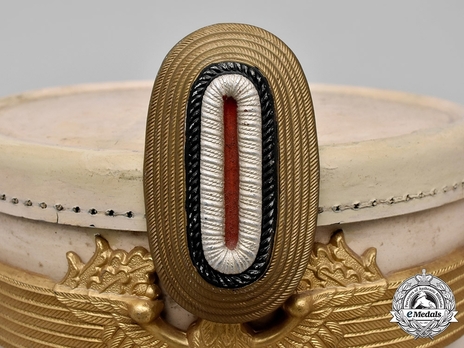
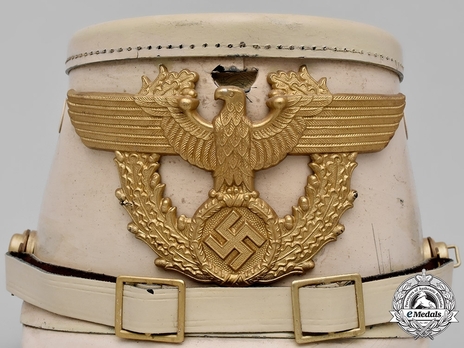
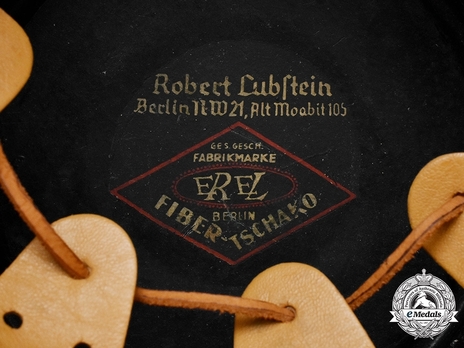
Estimated market value:
A very well-preserved Verkehrspolizei EM/NCO’s shako, constructed of moulded white vulcanfibre. The body of the Shako has an extruding, curved reverse with a downward sloping front and a classic coffee can-style top. The shako is flanked on each side by dual ventilation holes with wire mesh screens and a sliding interior panel permitting one hole to be closed. The peak of the shako bears a removable, Ordnungspolizei-style tri-colour cockade constructed of painted aluminum and measuring 35 mm (w) x 65 mm (h). The front bears a gilded second-pattern Ordnungspolizei-style German national eagle, measuring 150 mm (w) x 90 mm (h) and secured to the shako by dual reverse screws visible on the interior. The shako is flanked on each side by gilded rivets holding in place a white leather chinstrap, adjustable with dual buckles, which rests upon the visor when not in use. The inside of both the front and reverse visors are painted dark green. Stitched into the interior is a brown leather liner, perforated with ventilation holes at the forehead, and bearing nine fingers. Each finger is stamped with six holes, with a leather drawstring looped through each of the top holes. The crown is stamped with a size of “57 ½” and a maker’s mark of “ROBERT LUBSTEIN, BERLIN NW21” and “EREL-BERLIN, FIBER-TSCHAKO”. It measures 195 mm (w) x 255 mm (l) x 155 mm (h). Some scratching and material fatigue is evident to the vulcanfibre, but the shako is in an otherwise better than very fine condition.
During the Third Reich, an effort was made to unite all of Germany’s disparate provincial police forces and agencies into a single cohesive national unit. To attain this goal, Reichsführer-SS Heinrich Himmler was named Chief of the German Police in the Ministry of the Interior in June 1936. That same month, Himmler implemented new standardized uniforms, headgear, and insignia. The uniforms worn prior to Himmler’s appointment were often navy blue, particularly in what had been Prussia. The new uniforms were green, in a shade that was then dubbed “Police green”.
The German Police were divided into two main units, the Ordnungspolizei (Orps or Regular Police) and the Sicherheitspolizei (Secret Police); the Ordnungspolizei were unofficially called the green police (Grüne Polizei) as a result of their uniform colour. The Sicherheitspolizei were made up of two main organizations, the Gestapo and the Kriminalpolizei (Criminal Investigation Police). At the beginning of the Second World War, the Sicherheitspolizei were brought under the auspices of the Reich Main Security Office.
The Ordnungspolizei was also divided into smaller branches of service, and each branch was associated with a branch of service/troop colour (Truppenfarbe). The troop colours include:
Schutzpolizei des Reichs (National Protection Police): Green
Schutzpolizei der Gemeinden (Municipal Police) pre-1942: Red
Schutzpolizei der Gemeinden (Municipal Police) post-1942: Green
Gendarmerie (Gendarmes/Rural Police): Orange
Verwaltungspolizei (Administrative Personnel) pre-1942: Red over grey
Verwaltungspolizei (Administrative Personnel) post-1942: Light grey
Feuerschutzpolizei (Fire Protection Police): Carmine
Wasserschutzpolizei (Water Protection Police): Yellow
The uniform garments worn by members of the Wasserschutzpolizei (Water Protection Police) and the Feuerschutzpolizei (Fire Protection Police) remained blue after the 1936 uniform redesign.
The shako caps had the same general design from the beginning of the Third Reich in 1933 until the end of the Second World War in 1945. There were some minor design attributes added to these caps in 1936. These changes included colour differences that were associated with the wearer’s branch of service and rank on the fittings, chin strap, and police eagle insignia colour.
Members of the Traffic Police (Verkehrspolizei) wore white shako caps with gilt insignia. The chinstrap was made of white leather.
The inner lining of these shakos may feature a printed manufacturer mark, the size stamped in ink, and the date of issue stamped in ink.
A parade plume may be added to the top of the shako cap when it was worn as part of the parade uniform.

Comments
Sign in to comment and reply.


Scroll Top